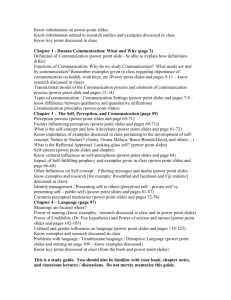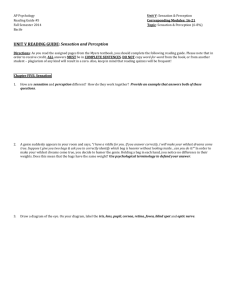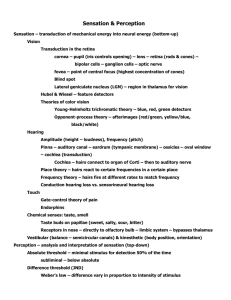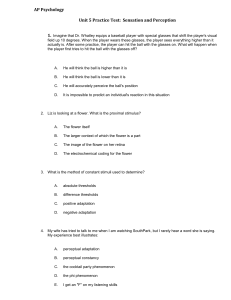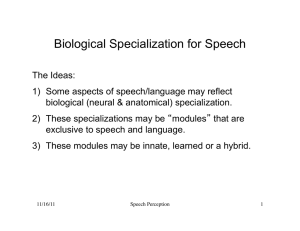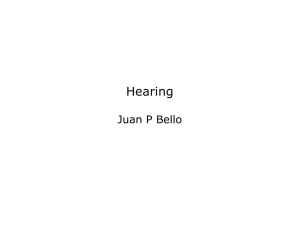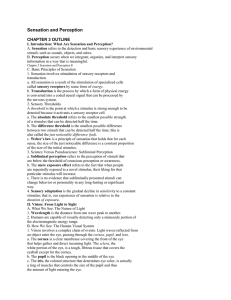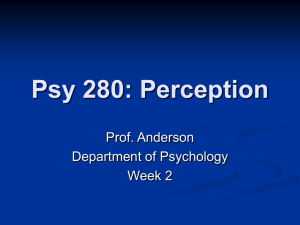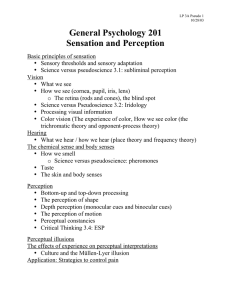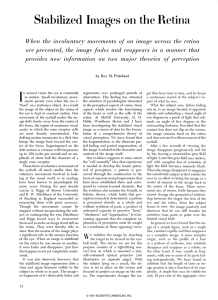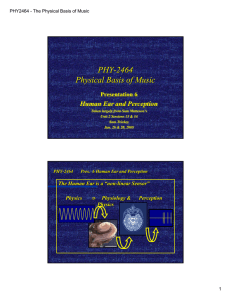Module 17 Influences on Perception (p. 163-170)
advertisement
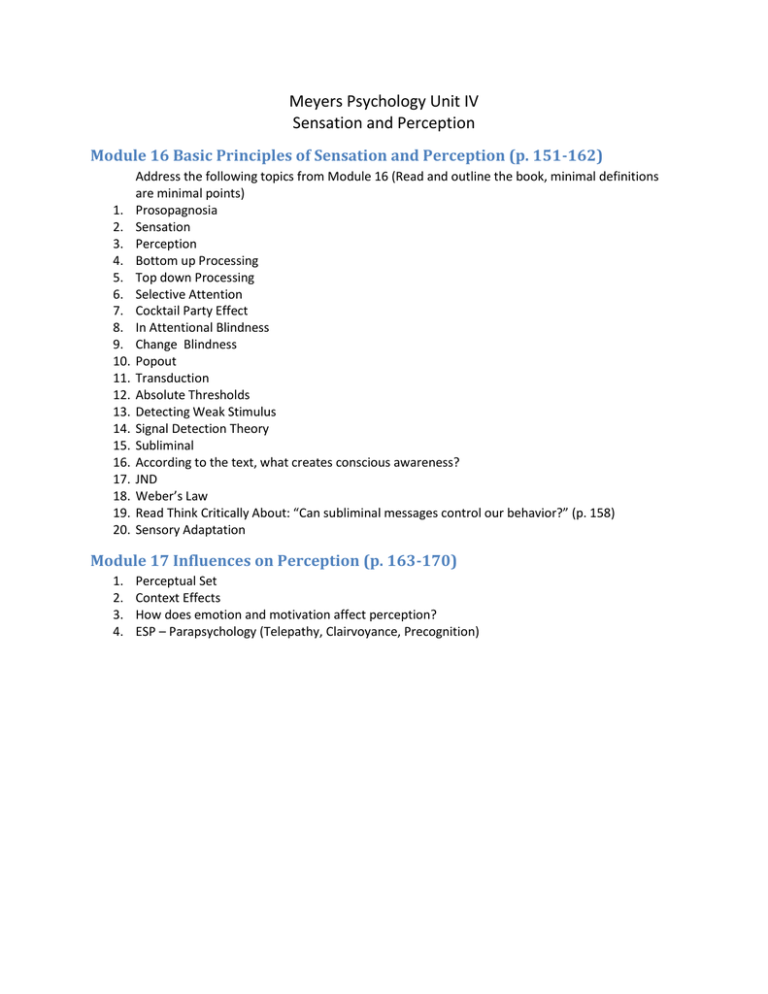
Meyers Psychology Unit IV Sensation and Perception Module 16 Basic Principles of Sensation and Perception (p. 151-162) 1. 2. 3. 4. 5. 6. 7. 8. 9. 10. 11. 12. 13. 14. 15. 16. 17. 18. 19. 20. Address the following topics from Module 16 (Read and outline the book, minimal definitions are minimal points) Prosopagnosia Sensation Perception Bottom up Processing Top down Processing Selective Attention Cocktail Party Effect In Attentional Blindness Change Blindness Popout Transduction Absolute Thresholds Detecting Weak Stimulus Signal Detection Theory Subliminal According to the text, what creates conscious awareness? JND Weber’s Law Read Think Critically About: “Can subliminal messages control our behavior?” (p. 158) Sensory Adaptation Module 17 Influences on Perception (p. 163-170) 1. 2. 3. 4. Perceptual Set Context Effects How does emotion and motivation affect perception? ESP – Parapsychology (Telepathy, Clairvoyance, Precognition) Module 18 Vision (p. 172-182) 1. 2. 3. 4. 5. 6. 7. 8. 9. 10. 11. 12. 13. 14. 15. 16. 17. 18. 19. 20. Visual Stimuli Wavelength Intensity The Eye a. Cornea b. Pupil c. Iris d. Lens e. Retina Accommodation The Retina Rods Cones Optic Nerve Blind Spot Fovea Copy the Eyeball Chart pg.172 Copy the Chart #18.1 pg. 174 Adaptation/Habituation What are “Feature Detectors”? How is the brain organized for specific visual tasks? Parallel Processing Color Vision Trichromatic Theory Opponent Process Theory Module 19 Visual Organization and Interpretation (p. 182-193) 1. 2. 3. 4. 5. 6. 7. 8. 9. 10. 11. 12. 13. Gestalt tendency in the brain Necker Cube Discrimination of Stimuli Figure/Ground Grouping Depth Perception Visual Cliff Experiment Binocular Cues Retinal Disparity 3-D Movies Carnivores and Herbivores and depth perception Monocular Cues Aspects of Depth see Fig 19.5 pg. 186 a. Relative Height b. Relative Motion c. Relative Size d. Linear Perspective e. Light and Shadow f. Interposition 14. Perceptual Constancy (This is complicated, what are the main elements you should understand? Try to understand the book and look it up online after if you don’t understand… try to be clear in your basic outline) 15. Moon Illusion 16. Ames Room 17. What is the main idea with Visual Interpretation Module 20 Hearing (p. 194-201) 1. 2. 3. 4. 5. 6. 7. 8. 9. 10. How do we hear? Amplitude Frequency Know the anatomy and working of the ear What are the parts of the middle ear Pg. 196 Draw the middle ear Identify the 2 types of hearing loss Ringing Ears Perceiving Loudness Theories of Audition Module 21 The Other Senses (p. 202-213) 1. 2. 3. 4. 5. 6. 7. 8. 9. 10. 11. 12. 13. 14. 15. Touch Pain Hereditary Sensory and Autonomic Neuropathy What are the factors that impact sensitivity to pain? Nociceptors Gate Control Theory Phantom Limb Pain Psychological Influences on Pain Social influences on pain Distraction Taste Smell Odor and Emotion Kinesthesia Vestibular Sense





